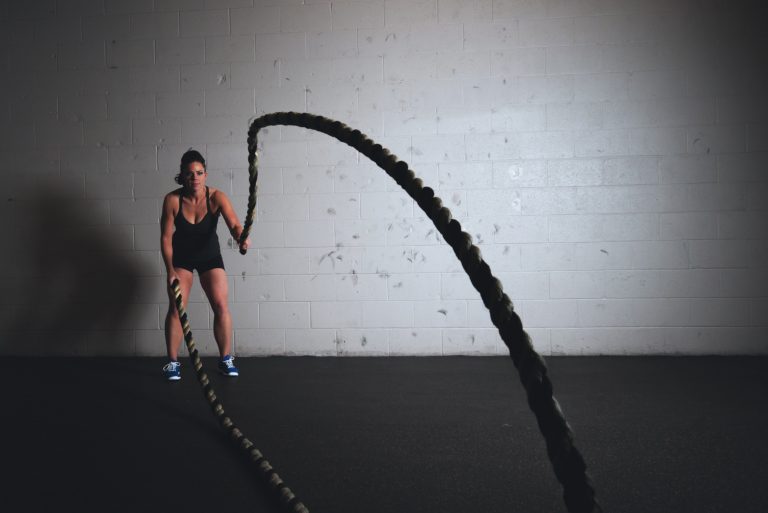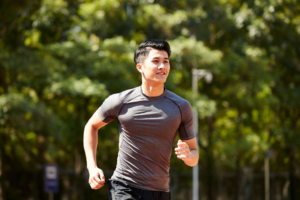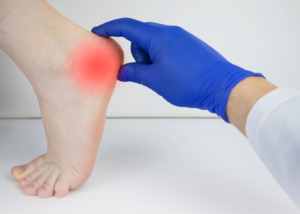The percentage of women participating in both junior and professional-level sport is at an all-time high – and while that’s something that we love to hear, it also poses a serious concern when it comes to injury.
Whether we women like it or not (speaking as a female sports-player writing this), the studies have shown that when performing the same activities or sports, we are more susceptible to sustaining certain injuries. Contributing factors are thought to be related to varying body compositions (like bone mineral density), hormonal changes (though this isn’t directly proven), and structural changes. These include a wider-set pelvis (and the resulting angles of our hip bones because of this), differences in the shapes of the bones themselves and the size of our ligaments and tissues. We also tend to have greater flexibility (and looser ligaments) and generally less muscle mass and more body fat.
Looking at a common example in sports that put high pressure through the knees (soccer, rugby, AFL, running, tennis, cycling, etc), women are 10 times more likely to rupture the anterior cruciate ligament (ACL), a major stabilising ligament in the knee, than their male counterparts. While an ACL injury may take just a few months to recover fully from, an ACL rupture usually requires surgery and a year-long recovery.
Another study comparing male and female skiers, swimmers, runners and soccer players also showed more ankle and knee injuries in women than men, particularly in soccer players, but the study did conclude that this seemed to be explained at least in part by the differences in the amount of training completed. More on this later.
Which Sports Have A Higher Risk Of Injury?

If we backtrack 6 years ago to the data released on Australia’s sports injuries statistics that caused hospitalisation, we find that 8.8% of all of these were just for Aussie Rules Football. This was followed closely by:
- Soccer
- Cycling
- Other Football
- Wheeled Motor Sports
- Water Sports, and
- Rugby
When we think about these statistics, we’ve got to bear in mind the significantly larger number of male participants than female at the time. A PSPRA survey that looked at the number of rugby players in the 12 months leading up to the hospitalisation study showed a staggering 188,676 male players versus 14,226 female players.
When we combine the increasing numbers of females sports players in these high-risk sports and their greater vulnerability for injury, we bring ourselves to today where we’re seeing more visits to our clinic from women with sports injuries than we have in the past decade. Perhaps this also plays a role in why the number of young Australians having knee reconstructions has increased by over 70% since 2003.
Which Injuries Are Women In Sports More Likely To Sustain?
While this list is not definitive, the commonly sustained injuries tend to be:
- Ankle sprains
- Knee injuries (particularly in soccer, football and basketball)
- Stress fractures
- Plantar fasciitis
And It’s Not Just Women.
It’s also kids that are starting competitive sports at younger and younger ages, both boys and girls, whose growth plates aren’t yet fully formed and whose muscles and tissues and as strong or ready as they would be in a few years time.
So, How Can We Combat This Injury Risk?
It all comes down to training and preparation. A study that compared the risk of injury between men and women at the Master’s Games in 2010 showed very similar injury types and locations by both sexes, with the most common injury location for both sexes being the knees and legs (no surprise there). Other studies on 18-22-year-old college athletes found no significant injury differences either. The difference? Athlete-level players have a solid training programme.
This is exactly what we prescribe for both our female and male sports players that either have an injury, or want to avoid injury in the future. It doesn’t matter if you’re just starting out or have been active for years! We start with a comprehensive biomechanical examination that assesses:
- Muscle strength
- Range of motion through the joints of the feet, knees and hips
- Flexibility
- Biomechanical foot and leg function
- Your gait and pressure through your feet
We then combine that information with the sports and activities that you’re performing daily and the muscles and joints that are taking on high loads to support your movement. We then have a good understanding of what is likely to get injured, and what we need to do to reduce that risk. Simple!
Stay Injury-Free This Summer
Here at Sole Motion, we’re all for healthy, happy and active families and helping you feel great on your feet at any age – and any activity level. If you’d like an assessment from one of our expert Podiatrists in Melbourne so you can stay injury-free this summer, then give us a call on 1300-FX-FEET. We’d love to help!





